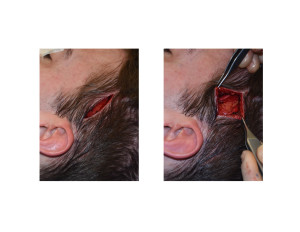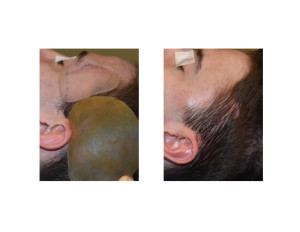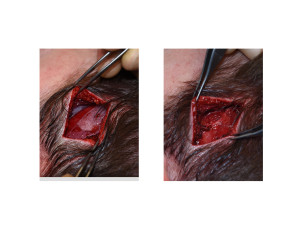The width of the side of the head is controlled by the shape of the temporal bone and the thickness of the temporalis muscle, all located above the ear. While many think the bone is the main contributing factor, the thickness of the temporalis muscle should not be underestimated. By CT scan measurements it can be seen that the temporalis muscle usually makes a bigger contribution than that of the bone to the width of the side of the heasd.
Regardless of the anatomic makeup of the width of the head, widening the narrow head must be done by either onlay augmentation of the bone (submuscular) or onlay augmentation of the muscle. (subfascial) Which implant location is best depends on whether the augmentation involve just the posterior temporal region (above the ears) or also the anterior temporal region as well. (by the side of the eye)


Head widening or complete temporal augmentation can be done through a single small temporal incision. Two implants are needed to increase the volume of both the anterior and posterior temporal regions.
Dr. Barry Eppley
Indianapolis, Indiana




